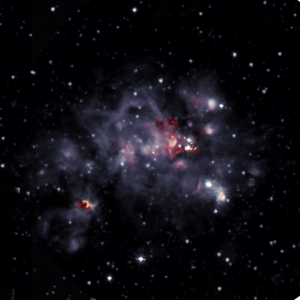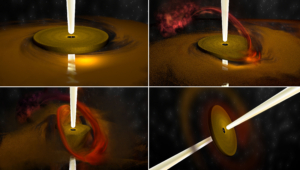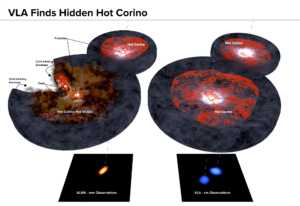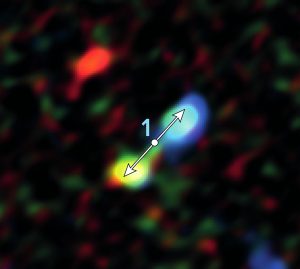New, high-resolution VLA images of a giant molecular cloud where new stars are being born show changes since a set of observations made more than two decades ago. Tracking changes in this region over time can reveal new details about the process of star formation and the interactions of outflows from young stars.


ALMA Shows Massive Young Stars Forming in “Chaotic Mess”
Astronomers used ALMA to study three young, high-mass stars and found, not the orderly, stable process of accreting new material seen in low-mass stars, but instead a “chaotic mess.” They conclude that their observations support a proposed “disordered infall” model for massive young stars that was supported by earlier computer simulations.

Astronomers Find Elusive Target Hiding Behind Dust
Some young, still-forming stars are surrounded by regions of complex organic molecules called “hot corinos.” In some pairs of young stars forming together as binary pairs, astronomers found a hot corino around one, but not the other. Guessing that the unseen one might be obscured by dust, researchers studied such a pair with the VLA at radio wavelengths that readily pass through dust, and found the other one.

ALMA Discovers Infant Stars Surprisingly Near Galaxy’s Supermassive Black Hole
ALMA discovers remarkably early signs of low-mass star formation near the supermassive black hole at the center the Milky Way.





